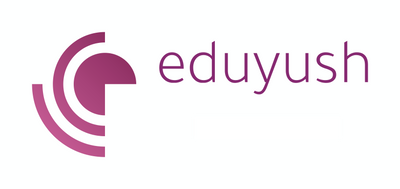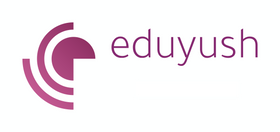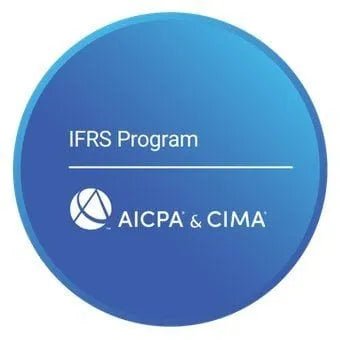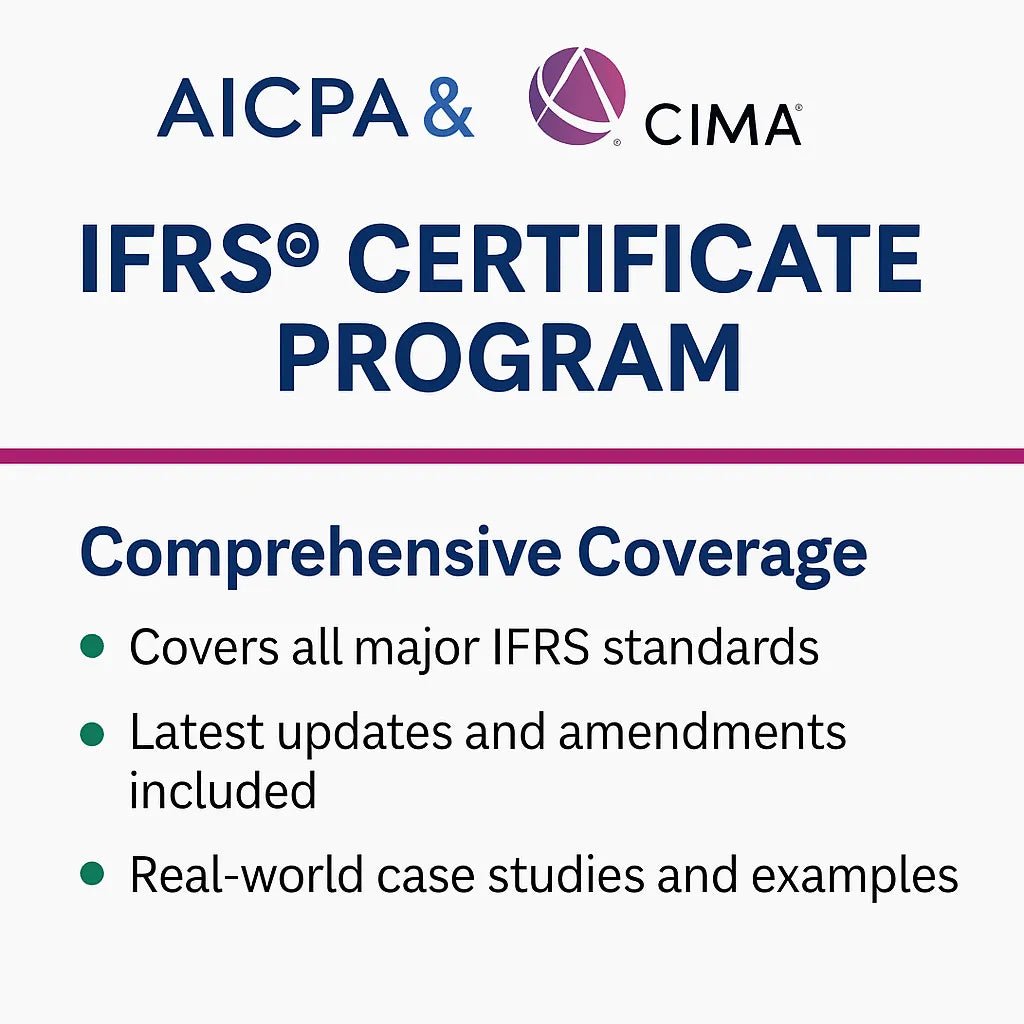50 IFRS 9 Practice Questions with Answers
🎯 Master IFRS 9: 50 Practice Questions Every Student Should Know
🌟 IFRS 9 Practice Questions: Ready to Test Your Financial Instruments Knowledge?
Whether you're preparing for exams, job interviews, or just want to solidify your understanding of IFRS 9, practice makes perfect! These 50 carefully crafted questions cover everything from classification and measurement to complex hedge accounting scenarios.
💡 How to Use This Guide:
- ✅ Try answering each question first
- ✅ Then check the solution and explanation
- ✅ Focus extra time on areas where you struggled
- ✅ Use these as flashcards for quick review
Master IFRS 16: 50 Practice Questions on Lease Accounting & ROU Assets
📚 BASIC CONCEPTS (IFRS 9 Practice Questions 1-15)
Question 1 📊
IFRS 9 applies to:
A) All financial instruments
B) Financial instruments except those covered by other standards
C) Listed securities only
D) Banks and financial institutions only
✅ Answer: B
Explanation: IFRS 9 applies to all financial instruments except those explicitly scoped out (e.g., interests in subsidiaries under IFRS 10, leases under IFRS 16, insurance contracts under IFRS 17).
Master IAS 16: 50 Practice Questions on PPE, Depreciation & Revaluation
Question 2 🎯
The three measurement categories for financial assets under IFRS 9 are:
A) Cost, fair value, and market value
B) Amortized cost, fair value through OCI, and fair value through profit or loss
C) Current, non-current, and contingent
D) Trading, available-for-sale, and held-to-maturity
✅ Answer: B
Explanation: IFRS 9 has three measurement categories: amortized cost, fair value through other comprehensive income (FVOCI), and fair value through profit or loss (FVTPL).
Master IFRS 17: 50 Practice Questions on Insurance Contracts & CSM
Question 3 🏪
For a financial asset to be measured at amortized cost, it must:
A) Be a debt instrument only
B) Pass the SPPI test and be held in a business model to collect contractual cash flows
C) Be listed on an exchange
D) Have a maturity of less than one year
✅ Answer: B
Explanation: Amortized cost classification requires: (1) business model objective is to hold to collect contractual cash flows, AND (2) contractual terms give rise to cash flows that are solely payments of principal and interest (SPPI).
Question 4 ⚖️
The SPPI test evaluates whether cash flows are:
A) Predictable and stable
B) Solely payments of principal and interest on the principal amount outstanding
C) Based on market rates
D) Guaranteed by government
✅ Answer: B
Explanation: SPPI test determines if contractual cash flows are solely payments of principal and interest, where interest is consideration for time value of money and credit risk.
Master IFRS 18: 50 Practice Questions on MPMs, Disclosures & Statement Format
Question 5 🏢
Business model assessment is made at:
A) Individual instrument level
B) Portfolio level that reflects how groups of financial assets are managed
C) Entity level
D) Industry level
✅ Answer: B
Explanation: Business model is determined at a level that reflects how groups of financial assets are managed togetherto achieve a particular business objective.
Question 6 🏦
Under IFRS 9, expected credit losses are recognized:
A) Only when credit losses are incurred
B) From initial recognition for all financial assets
C) Only for impaired assets
D) When payment is overdue
✅ Answer: B
Explanation: IFRS 9 uses an expected credit loss (ECL) model that requires recognition of credit losses from initial recognition, not just when incurred.
Question 7 🏗️
The three stages of the ECL model are:
A) Good, Watch, Default
B) Stage 1 (12-month ECL), Stage 2 (lifetime ECL), Stage 3 (credit-impaired)
C) Low, Medium, High risk
D) Current, Past due, Impaired
✅ Answer: B
Explanation: Stage 1: 12-month ECL for performing assets; Stage 2: lifetime ECL for assets with significant increase in credit risk; Stage 3: lifetime ECL for credit-impaired assets.
Question 8 💰
Significant increase in credit risk triggers:
A) Immediate write-off
B) Move from Stage 1 to Stage 2 (12-month to lifetime ECL)
C) Reclassification to FVTPL
D) Derecognition of the asset
✅ Answer: B
Explanation: Significant increase in credit risk results in moving from Stage 1 (12-month ECL) to Stage 2 (lifetime ECL recognition).
Question 9 🔄
Hedge accounting under IFRS 9:
A) Is mandatory for all derivatives
B) Is optional and requires meeting specific criteria
C) Only applies to fair value hedges
D) Is prohibited for financial institutions
✅ Answer: B
Explanation: Hedge accounting is optional but requires meeting specific criteria including formal designation, documentation, and effectiveness requirements.
Question 10 📈
The three types of hedging relationships are:
A) Short, medium, and long-term
B) Fair value hedge, cash flow hedge, and net investment hedge
C) Currency, interest rate, and commodity
D) Micro, macro, and portfolio
✅ Answer: B
Explanation: IFRS 9 recognizes three hedge types: fair value hedges, cash flow hedges, and net investment hedges of foreign operations.
Question 11 🎨
Equity instruments under IFRS 9:
A) Must be measured at FVTPL
B) Can be measured at amortized cost
C) Are measured at FVTPL unless irrevocably elected to FVOCI (no recycling)
D) Follow the debt instrument classification rules
✅ Answer: C
Explanation: Equity instruments are measured at FVTPL by default, unless entity makes irrevocable election to measure at FVOCI (with no recycling of gains/losses to P&L).
Question 12 ⚠️
Financial liabilities are generally measured at:
A) Fair value through profit or loss
B) Amortized cost unless specific exceptions apply
C) Fair value through OCI
D) Historical cost
✅ Answer: B
Explanation: Financial liabilities are generally measured at amortized cost, except for those held for trading, designated at FVTPL, or meeting other specific exceptions.
Question 13 🏪
Derecognition of financial assets occurs when:
A) Fair value declines significantly
B) Contractual rights to cash flows expire or are transferred with substantially all risks and rewards
C) Asset becomes impaired
D) Entity changes its business model
✅ Answer: B
Explanation: Derecognize when: (1) contractual rights to cash flows expire, or (2) asset is transferred and substantially all risks and rewards are transferred.
Question 14 📊
Embedded derivatives must be separated when:
A) They exist in any contract
B) Economic characteristics are not closely related to host and host is not at FVTPL
C) They are complex instruments
D) Required by management
✅ Answer: B
Explanation: Separate embedded derivatives if: (1) economic characteristics not closely related to host, (2) separateinstrument with same terms would meet derivative definition, (3) hybrid instrument not measured at FVTPL.
Question 15 🔍
Credit-impaired financial assets (Stage 3):
A) Must be written off immediately
B) Continue to recognize interest income on gross carrying amount
C) Recognize interest income on net carrying amount (after ECL)
D) Stop recognizing interest income completely
✅ Answer: C
Explanation: For credit-impaired assets (Stage 3), interest income is calculated on the net carrying amount (gross carrying amount minus ECL allowance).
🏭 PRACTICAL APPLICATIONS (Questions 16-35)
Question 16 📱
Corporate bond held to collect contractual cash flows, with bullet repayment and fixed coupon. Classification:
A) FVTPL
B) FVOCI
C) Amortized cost
D) Depends on credit rating
✅ Answer: C
Explanation: Meets both criteria: held to collect cash flows (business model) and SPPI test passed (fixed coupon = interest on principal).
Question 17 🏠
Convertible bond where conversion feature significantly modifies cash flows. Classification:
A) Amortized cost
B) FVOCI
C) FVTPL
D) Split accounting
✅ Answer: C
Explanation: Fails SPPI test due to conversion feature that creates exposure to equity price changes, so must be measured at FVTPL.
Question 18 💳
Bond portfolio managed by buying, holding, and selling to optimize total return. Classification:
A) Amortized cost
B) FVOCI
C) FVTPL
D) Mixed portfolio
✅ Answer: C
Explanation: Business model is to manage assets to realize cash flows through both collection and sale, with frequent trading activity indicating FVTPL classification.
Question 19 🏢
Loan with significant increase in credit risk but not credit-impaired. Gross carrying amount $100,000, lifetime ECL $8,000. Interest income calculation:
A) $100,000 × effective interest rate
B) $92,000 × effective interest rate
C) ($100,000 - $8,000) × effective interest rate
D) No interest income recognized
✅ Answer: A
Explanation: For Stage 2 assets (significant increase in credit risk but not credit-impaired), interest income is calculated on gross carrying amount.
Question 20 💼
Asset purchased at $95,000, par value $100,000, lifetime ECL at origination $3,000. Initial recognition:
A) Asset $95,000, no loss allowance
B) Asset $95,000, loss allowance $3,000
C) Asset $100,000, loss allowance $5,000
D) Asset $92,000
✅ Answer: B
Explanation: Purchased or originated credit-impaired (POCI) assets: recognize at transaction price with loss allowance for lifetime ECL from initial recognition.
Question 21 🌾
Loan becomes 90 days past due. This creates:
A) Rebuttable presumption of significant increase in credit risk
B) Automatic Stage 3 classification
C) Immediate write-off
D) No impact on staging
✅ Answer: B
Explanation: 30+ days past due creates rebuttable presumption of significant increase in credit risk; 90+ days creates rebuttable presumption the asset is credit-impaired (Stage 3).
Question 22 🏗️
Fair value hedge of fixed-rate debt for interest rate risk. Hedge is effective. Accounting treatment:
A) No accounting changes
B) Adjust hedged item's carrying amount for fair value changes; recognize derivative gains/losses
C) Defer derivative gains/losses in OCI
D) Recognize only derivative fair value changes
✅ Answer: B
Explanation: In fair value hedge: (1) recognize derivative at fair value through P&L, (2) adjust hedged item's carrying amount for hedged risk fair value changes through P&L.
Question 23 💰
Cash flow hedge of forecasted sale. Derivative gains are $50,000. Accounting treatment:
A) Recognize $50,000 in profit or loss
B) Defer $50,000 in cash flow hedge reserve (OCI)
C) Adjust inventory carrying amount
D) No recognition until sale occurs
✅ Answer: B
Explanation: Effective cash flow hedge gains/losses on derivative are deferred in OCI (cash flow hedge reserve) until hedged transaction affects P&L.
Question 24 🔄
Equity investment designated at FVOCI. Current year fair value gain $20,000, dividends received $5,000. P&L impact:
A) $25,000 gain
B) $20,000 gain
C) $5,000 dividend income
D) $0
✅ Answer: C
Explanation: For equity instruments at FVOCI: fair value changes go to OCI (never recycled), only dividends are recognized in P&L.
Question 25 🏦
Financial liability designated at FVTPL due to own credit risk changes. Fair value decrease $30,000 due to own credit deterioration. Recognition:
A) $30,000 gain in profit or loss
B) $30,000 gain in OCI
C) Split: portion due to own credit risk in OCI, remainder in P&L
D) No recognition
✅ Answer: C
Explanation: For financial liabilities designated at FVTPL, changes due to own credit risk are recognized in OCI (not recycled) unless this creates accounting mismatch.
Question 26 📊
Bond investment reclassified from "hold to collect" to "hold to collect and sell" business model. Reclassification date fair value $105,000, amortized cost $100,000. Accounting:
A) Continue at amortized cost
B) Reclassify to FVOCI, recognize $5,000 in OCI
C) Reclassify to FVTPL, recognize $5,000 in P&L
D) No reclassification permitted
✅ Answer: B
Explanation: Reclassify from amortized cost to FVOCI: adjust to fair value with difference recognized in OCI. Effective interest rate continues unchanged.
Question 27 🎯
Derivative not designated in hedge relationship. Fair value increases $15,000. Accounting:
A) Recognize $15,000 in OCI
B) Recognize $15,000 in profit or loss
C) Defer recognition
D) Amortize over derivative life
✅ Answer: B
Explanation: Derivatives not in qualifying hedge relationships are measured at FVTPL - all fair value changes go directly to profit or loss.
Question 28 🏪
Loan modified due to borrower financial difficulties. Original EIR 8%, new EIR 5%, forgiveness of $20,000 principal. Accounting treatment:
A) Continue with original terms
B) Derecognize old loan, recognize new loan
C) Recognize $20,000 loss immediately plus additional loss for rate reduction
D) Adjust carrying amount for total modification loss
✅ Answer: D
Explanation: For modifications not resulting in derecognition, adjust carrying amount for difference between original and modified cash flows discounted at original EIR, recognizing modification loss.
Question 29 💡
Trade receivable with no significant financing component. Expected credit loss assessment:
A) 12-month ECL only
B) Lifetime ECL from initial recognition
C) No ECL assessment required
D) ECL assessment after 30 days
✅ Answer: B
Explanation: Trade receivables without significant financing component always use simplified approach - recognizelifetime ECL from initial recognition.
Question 30 🏭
Hedge effectiveness testing under IFRS 9:
A) Must be within 80-125% range
B) Requires statistical correlation testing
C) Uses qualitative and quantitative methods, no bright-line thresholds
D) Is not required
✅ Answer: C
Explanation: IFRS 9 removed the 80-125% bright-line test, replacing it with objectives-based approach using qualitative and quantitative methods.
Question 31 📈
Contract with pay-if-paid clause (payment only if debtor's customer pays). SPPI assessment:
A) Passes SPPI test
B) Fails SPPI test
C) Depends on probability of payment
D) Requires separate assessment
✅ Answer: B
Explanation: Pay-if-paid clauses typically fail SPPI test because payment depends on cash flows of third party, not just credit risk of immediate debtor.
Question 32 🏢
Purchased credit-impaired asset. Gross carrying amount $80,000, lifetime ECL $25,000. Interest income in Year 1:
A) $80,000 × credit-adjusted EIR
B) $55,000 × credit-adjusted EIR
C) $80,000 × original EIR
D) No interest income
✅ Answer: B
Explanation: For POCI assets, always calculate interest income on net carrying amount using credit-adjusted effective interest rate determined at initial recognition.
Question 33 🎨
Net investment hedge of foreign subsidiary. Hedge effectiveness proven. Hedging instrument gain $100,000. Accounting:
A) Recognize in profit or loss
B) Recognize in OCI (translation reserve)
C) Recognize in cash flow hedge reserve
D) Adjust investment carrying amount
✅ Answer: B
Explanation: Effective net investment hedge gains/losses are recognized in OCI in the same component (foreign currency translation reserve) as the hedged item.
Question 34 ⚖️
Financial guarantee contract issued. Initial measurement:
A) Fair value
B) Premium received
C) Higher of premium received and loss allowance under ECL model
D) Expected payout amount
✅ Answer: C
Explanation: After initial recognition at fair value, financial guarantee contracts are measured at higher of: (1) loss allowance under IFRS 9, and (2) amount initially recognized less cumulative amortization.
Question 35 🔄
Asset transfer where entity retains servicing rights but transfers substantially all risks and rewards. Derecognition outcome:
A) Full derecognition with servicing asset recognition
B) Continuing involvement approach
C) No derecognition
D) Partial derecognition
✅ Answer: A
Explanation: If substantially all risks and rewards are transferred, derecognize asset fully. Separately recognize servicing asset or liability at fair value if servicing fee is not adequate compensation.
🎓 ADVANCED CONCEPTS (Questions 36-50)
Question 36 📊
Dynamic hedging strategy where hedge ratio changes. IFRS 9 treatment:
A) Prohibited - hedge accounting must cease
B) Allowed through hedge ratio rebalancing
C) Requires de-designation and re-designation
D) Only permitted for cash flow hedges
✅ Answer: B
Explanation: IFRS 9 allows hedge ratio rebalancing to maintain hedge effectiveness when risk management objective hasn't changed, without terminating hedge accounting.
Question 37 🔍
Commodity contract with net settlement provision but regular delivery expected. Accounting treatment:
A) Always accounted for as derivative
B) "Own use" exemption may apply if used for entity's expected purchase/sale requirements
C) Must be measured at FVTPL
D) Treated as executory contract
✅ Answer: B
Explanation: Contracts for non-financial items can qualify for "own use" exemption and be accounted for as executory contracts if entered into for entity's expected requirements.
Question 38 🏦
Complex structured product with multiple embedded derivatives. Assessment approach:
A) Assess each embedded derivative separately
B) Assess the entire instrument as a single unit
C) Always separate all embedded features
D) Apply FVTPL to avoid complexity
✅ Answer: B
Explanation: When multiple embedded features exist, assess whether their combined effect creates cash flows that are consistent with a basic lending arrangement (SPPI test).
Question 39 📈
Credit valuation adjustment (CVA) for derivatives. IFRS 9 treatment:
A) Not required under IFRS 9
B) Include in fair value measurement under IFRS 13
C) Separate disclosure only
D) Recognize in OCI
✅ Answer: B
Explanation: CVA is part of fair value measurement under IFRS 13, reflecting counterparty credit risk in derivative valuations.
Question 40 🎯
Macro hedge accounting under IFRS 9:
A) Is fully specified in the standard
B) Is prohibited
C) Continues under IAS 39 until IASB completes macro hedging project
D) Uses portfolio approach only
✅ Answer: C
Explanation: Entities can continue applying IAS 39 hedge accounting requirements for macro hedging until the IASB completes its macro hedging project.
Question 41 🏭
Forward-starting hedge of future debt issuance. Designation timing:
A) When forward contract is entered
B) When debt is issued
C) Designation can occur before hedged item exists if highly probable
D) Not eligible for hedge accounting
✅ Answer: C
Explanation: Cash flow hedges can be designated for highly probable forecasted transactions, including future debt issuances, before the hedged item exists.
Question 42 📊
Basket option with exposure to multiple equity securities. SPPI assessment:
A) Passes if underlying equities are investment grade
B) Fails SPPI test due to equity price exposure
C) Depends on correlation between securities
D) Requires separation of embedded derivative
✅ Answer: B
Explanation: Instruments with exposure to equity securities (other than simple equity instruments) typically fail SPPItest as they create exposure beyond credit risk and time value of money.
Question 43 🔄
Currency basis spread in cross-currency interest rate swap. Hedge accounting treatment:
A) Must be excluded from hedge designation
B) Can be included in hedge designation
C) Requires separate accounting treatment
D) Automatically qualifies for cost of hedging
✅ Answer: B
Explanation: IFRS 9 allows entities to include or exclude currency basis spreads from hedge designation, with specific guidance on how to account for excluded components.
Question 44 🏢
ECL measurement for revolving credit facilities. Approach:
A) 12-month ECL based on current exposure
B) Lifetime ECL on full facility amount
C) Expected exposure over expected life including future drawdowns
D) ECL on committed but undrawn amounts only
✅ Answer: C
Explanation: For loan commitments, measure ECL on expected exposure over expected life, considering expected drawdowns and repayments.
Question 45 📈
Contingent consideration in business combination measured at FVTPL. Subsequent changes:
A) Adjust goodwill
B) Recognize in profit or loss
C) Recognize in OCI
D) Depends on nature of contingency
✅ Answer: B
Explanation: Contingent consideration that is a financial instrument is measured at FVTPL under IFRS 9, with subsequent changes recognized in profit or loss.
Question 46 🎯
Hybrid instrument with host debt and embedded equity conversion option. Assessment when equity is not quoted:
A) Always separate embedded derivative
B) Assess SPPI at instrument level
C) Measure entire instrument at FVTPL
D) Apply cost exception for equity component
✅ Answer: C
Explanation: When embedded equity conversion option cannot be reliably fair valued (unquoted equity), measure entire hybrid instrument at FVTPL.
Question 47 🏦
Transferred asset with continuing involvement through guarantee. Measurement of continuing involvement:
A) At guarantee amount
B) At fair value of guarantee
C) At lower of original carrying amount and maximum guarantee exposure
D) No measurement required
✅ Answer: C
Explanation: Under continuing involvement approach, measure continuing involvement at lower of: (1) carryingamount of asset, and (2) maximum amount entity could be required to repay.
Question 48 📊
Impairment reversals under ECL model:
A) Are prohibited
B) Are required when credit risk decreases
C) Are permitted up to gross carrying amount
D) Only apply to POCI assets
✅ Answer: C
Explanation: ECL impairment can be reversed through profit or loss, but carrying amount cannot exceed what amortized cost would have been without impairment.
Question 49 🔄
Cost of hedging approach for excluded derivative components:
A) Recognize immediately in profit or loss
B) Defer in OCI and amortize systematically
C) Include in initial measurement of hedged item
D) Not permitted under IFRS 9
✅ Answer: B
Explanation: Cost of hedging approach allows deferring fair value changes of excluded components in OCI and amortizing to P&L on systematic basis.
Question 50 🎯
Multiple economic relationships within single hedging relationship:
A) Not permitted - require separate hedge designations
B) Permitted if all relationships qualify and are documented
C) Only for similar risk types
D) Require proportional hedge ratios
✅ Answer: B
Explanation: IFRS 9 allows multiple hedging relationships in single designation if each qualifies individually and entity documents how effectiveness will be assessed.
Further your learning with IFRS Full Form and Definitions to understand core financial terminology.
🎯 How Did You Score on IFRS 9 Practice Questions?
45-50 Correct: 🏆 IFRS 9 Expert! You've mastered financial instruments
35-44 Correct: 📚 Strong Foundation - Review the concepts you missed
25-34 Correct: 📖 Good Start - Focus on practical applications
Below 25: 🎓 Keep Learning - Review basic concepts and try again
🚀 Next Steps for Students on IFRS 9 Practice Questions
- ✅ Review missed questions and understand the explanations
- ✅ Practice with real company examples from annual reports
- ✅ Join study groups to discuss complex scenarios
- ✅ Follow updates to IFRS 9 from the IASB
- ✅ Apply knowledge in internships or case studies
🎓 Ready to Master IFRS Completely?
These practice questions are just the beginning! Eduyush offers comprehensive IFRS training that will take your knowledge to the next level:
📚 AICPA IFRS Certification Course 🪙 Cutting-edge topics including crypto accounting 🎯 Real-world case studies and applications 🏆 Preparation for emerging accounting challenges
📚 Diploma in IFRS 🌍 International perspective on evolving standards 💻 Technology-integrated accounting education 👨🏫 Expert instructors who understand innovation
👨🏫 Learn from experienced IFRS practitioners
🚀 Transform your understanding of IFRS from basic to expert level with Eduyush!
FAQs
ACCA blogs
Follow these links to help you prepare for the ACCA exams
IFRS blogs
Follow these blogs to stay updated on IFRS
Formats
Use these formats for day to day operations
- Account closure format
- Insurance claim letter format
- Transfer certification application format
- Resignation acceptance letter format
- School leaving certificate format
- Letter of experience insurance
- Insurance cancellation letter format
- format for Thank you email after an interview
- application for teaching job
- ACCA PER examples
- Leave application for office
- Marketing manager cover letter
- Nursing job cover letter
- Leave letter to class teacher
- leave letter in hindi for fever
- Leave letter for stomach pain
- Leave application in hindi
- Relieving letter format
Interview questions
Link for blogs for various interview questions with answers
- Strategic interview questions
- Accounts payable interview questions
- IFRS interview questions
- CA Articleship interview questions
- AML and KYC interview questions
- Accounts receivable interview questions
- GST interview questions
- ESG Interview questions
- IFRS 17 interview questions
- Concentric Advisors interview questions
- Questions to ask at the end of an interview
- Business Analyst interview questions
- Interview outfits for women
- Why should we hire you question
leave application format
- Leave application for office
- Leave application for school
- Leave application for sick leave
- Leave application for marriage
- leave application for personal reasons
- Maternity leave application
- Leave application for sister marriage
- Casual leave application
- Leave application for 2 days
- Leave application for urgent work
- Application for sick leave to school
- One day leave application
- Half day leave application
- Leave application for fever
- Privilege leave
- Leave letter to school due to stomach pain
- How to write leave letter
Insurance blogs
- Sample letter of appeal for reconsideration of insurance claims
- How to increase insurance agent productivity
- UAE unemployment insurance
- Insurance cancellation letter
- Insurance claim letter format
- Insured closing letter formats
- ACORD cancellation form
- Provision for insurance claim
- Cricket insurance claim
- Insurance to protect lawsuits for business owners
- Certificate holder insurance
- does homeowners insurance cover mold
- sample letter asking for homeowner right to repair for insurance
- Does homeowners insurance cover roof leaks













Leave a comment